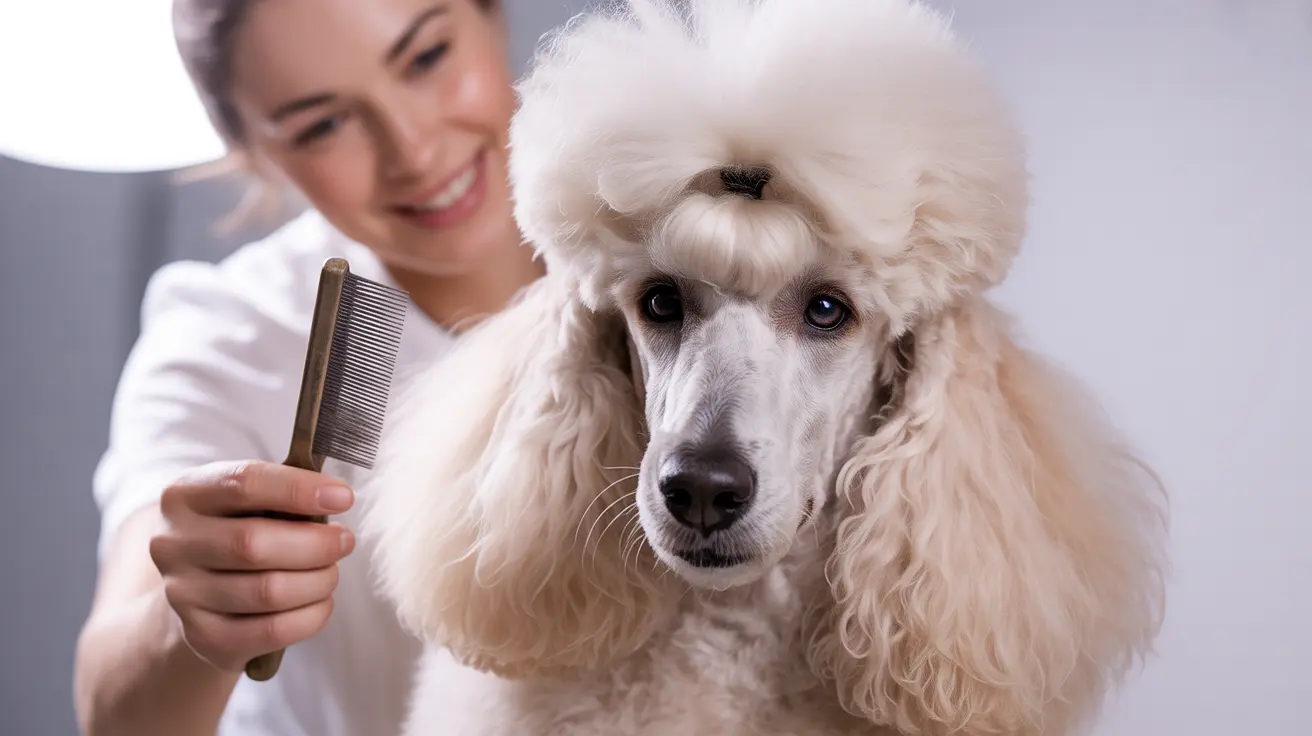When it comes to poodles, one of the most distinctive features is their luxurious, curly coat. Many potential poodle owners and dog enthusiasts often wonder whether poodles have hair or fur. This question isn't just about semantics – understanding the unique characteristics of a poodle's coat is crucial for proper care, grooming, and managing potential allergies.
In this comprehensive guide, we'll explore the fascinating world of poodle coats, breaking down the science behind their unique hair structure, and explaining why it matters for both owners and allergy sufferers.
The Scientific Difference Between Hair and Fur
Poodles are widely recognized as having hair rather than fur. While both hair and fur are made of the same protein called keratin, there are several key differences in how they grow and behave:
The main distinction lies in the growth cycle. Poodle hair grows continuously, similar to human hair, whereas typical dog fur grows to a certain length and then stops. This continuous growth pattern means poodles require regular trimming, much like we need haircuts.
Understanding the Unique Poodle Coat Structure
- Dense and curly
- Notably soft to the touch
- Grows in a distinctive spiral pattern
- Minimal shedding compared to fur-bearing breeds
Genetic Factors Behind Poodle Hair
The unique characteristics of poodle hair are determined by specific genetic markers. The curly texture is controlled by the dominant "C" locus gene, which creates the breed's signature corkscrew pattern. This genetic blueprint also influences:
- Hair texture and density
- Growth patterns
- Color variations
- Coat maintenance requirements
Grooming Requirements and Maintenance
Because poodles have hair rather than fur, they require specific grooming attention:
- Regular brushing (often daily) to prevent matting
- Professional grooming every 4-8 weeks
- Special shampoos and conditioners designed for their coat type
- Consistent maintenance to prevent skin issues
The Hypoallergenic Advantage
The poodle's hair-like coat contributes to their reputation as a hypoallergenic breed. While no dog is completely allergen-free, poodles tend to be better suited for allergy sufferers because:
- Their hair traps dander close to the skin
- They shed minimally compared to fur-bearing breeds
- Regular grooming helps control allergen distribution
Frequently Asked Questions
Do poodles have hair or fur, and what is the difference?
Poodles have hair rather than fur. Their hair grows continuously and requires regular trimming, unlike fur which grows to a set length and sheds. The hair is also typically single-layered, whereas fur often consists of both an outer coat and undercoat.
Why do poodles shed less than other dog breeds?
Poodles shed less because their hair stays in the growth phase longer than typical dog fur. When they do shed, the loose hair often gets trapped in their curly coat rather than falling onto furniture and floors.
How often should I groom and trim my poodle's hair to prevent matting?
Poodles should be brushed daily and professionally groomed every 4-8 weeks. Regular home maintenance between professional grooming sessions is essential to prevent painful matting and skin problems.
Are poodles really hypoallergenic because they have hair instead of fur?
While no dog is completely hypoallergenic, poodles are considered more suitable for allergy sufferers because their hair-like coat traps dander and sheds minimally. However, they still produce some allergens through skin cells and saliva.
What causes the curly texture in poodle hair and how does genetics affect their coat?
The curly texture in poodle hair is caused by a dominant gene called the "C" locus. This genetic factor determines not only the curl pattern but also influences the coat's texture, density, and growth characteristics.
Conclusion
Understanding that poodles have hair rather than fur helps explain their unique grooming needs and hypoallergenic qualities. This distinctive characteristic makes them both challenging to maintain and highly desirable as pets, especially for those with allergies. With proper care and regular grooming, a poodle's hair can remain healthy, beautiful, and manageable throughout their life.






